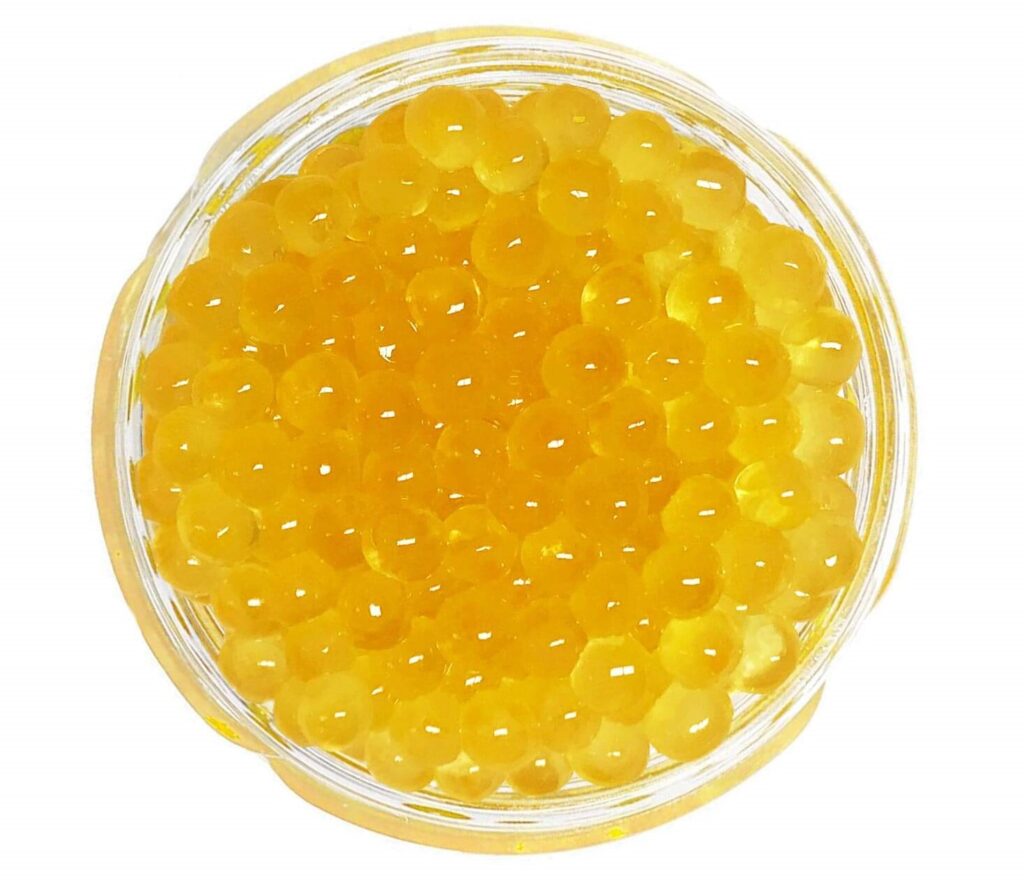
Shinanoyuki-masu (信濃雪鱒) is a cold-water fish classified in the genus Coregonus, which is related to salmon, and was not originally from Japan.
In 1975, eggs were introduced to Nagano Prefecture from former Czechoslovakia, and after 10 years of testing and research at the Nagano Prefectural Fisheries Experiment Station, the prefecture succeeded in establishing the world’s first aquaculture technology.
In 1983, full-scale production began on a private-sector basis, and the fish was named Shinanoyuki-masu (shinano means ‘Nagano prefecture’, yuki means ‘snow’, and masu means ‘trout’), an appropriate nickname for its silvery-white appearance reminiscent of snow.
The neighboring Saku Aquaculture and Fisheries Cooperative Association also sell sturgeon roe under the name Golden caviar after separating the muscle-like roe into pieces and marinating them in salt. However, this is not a Golden caviar, but rather a Yellow caviar.
Generally, River trout, Char, Yamame, and Amago, which grow only in rivers and lakes, do not take red pigments, so their eggs themselves remain yellow. Yellow is also associated with roes but can also come from an albino fish. Rainbow trout is almost always orange, but can also be yellow using a feed that does not contain astaxanthin.
These are what we call Yellow caviar in Japan.
[sc_apply url=”https://sushiuniversity.jp/apply/”]
We hope this information will be helpful.

Revision date: February 18, 2023
Share this article